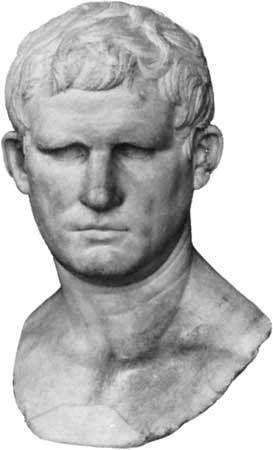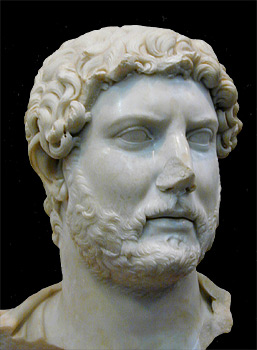
Agrippa commanded Octavian's fleet during the Battle of Actium, the naval battle that finally defeated the forces of Marcus Antonius and Cleopatra, in 31 B.C. According to the above inscription, Agrippa built the first Pantheon on the Campus Martius during his third consulship, possibly as a way to commemorate the Battle of Actium. Construction was completed around 27 B.C. Since Agrippa was closely connected to the emperor Augustus, first serving as a commander and eventually as a son-in-law, it makes sense that he initially dedicated the Pantheon to Mars and Venus, the two ancestral gods of the Julian family. Agrippa originally designed the Pantheon in a classic rectangular style, similar to the Temple of Concordia in the Roman Forum and many others.
In 80 A.D., a fire destroyed Agrippa’s original building. The emperor Domitian restored the temple, but in 110 A.D. lightning struck and burned it again. The emperor Hadrian rebuilt the temple around 120-125 A.D., this time from all fireproof materials, including the familiar concrete dome. But he made sure the facade of the newly rebuilt temple still bore its original inscription from 27 B.C. Still, because of lightning strikes on top and water damage from the Tiber River on the bottom, the Pantheon again needed repairs about 80 years later. Septimius Severus and Caracalla restored the building in 202 A.D., and although their restorations did not require major changes, they too left an inscription attesting to their work.

MARCUS AGIPPA
63 B.C. to 12 B.C.

Pope Boniface IV converted the Pantheon into a Christian church after the Byzantine emperor Phocas had given it to him in 609 A.D. Although he altered the interior to suit its new purpose, this transformation saved the Pantheon from the complete ruin that befell many other ancient Roman temples. Over the years people removed much of the fine external marble for other purposes, and some of the capitals are currently in the British Museum. Perhaps the most peculiar defamation of the Pantheon occurred in 1625, when Pope Urban VIII stripped the roof of its original bronze tiles and recast them as cannons for an upcoming war. On the whole, however, the Pantheon has remained remarkably well preserved for a building of its age.